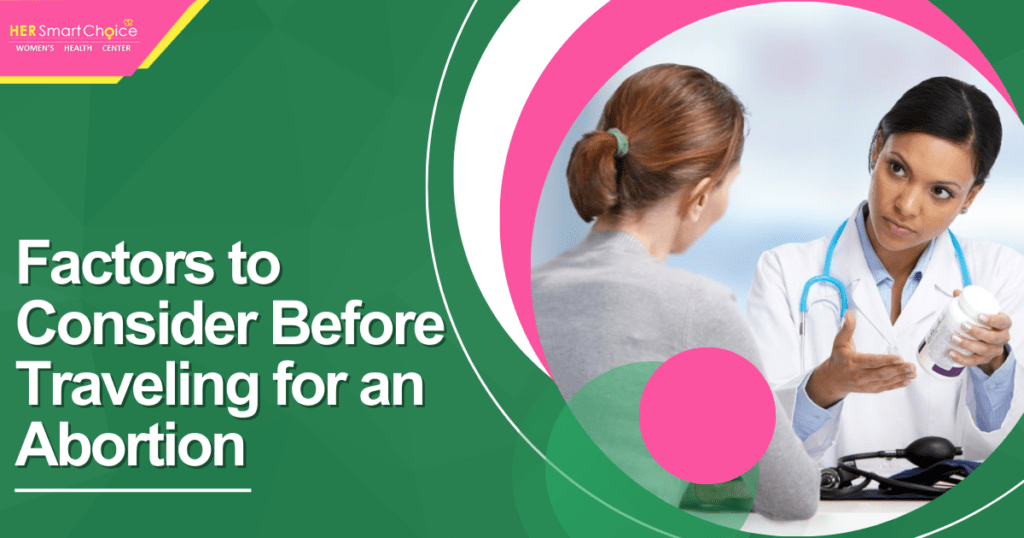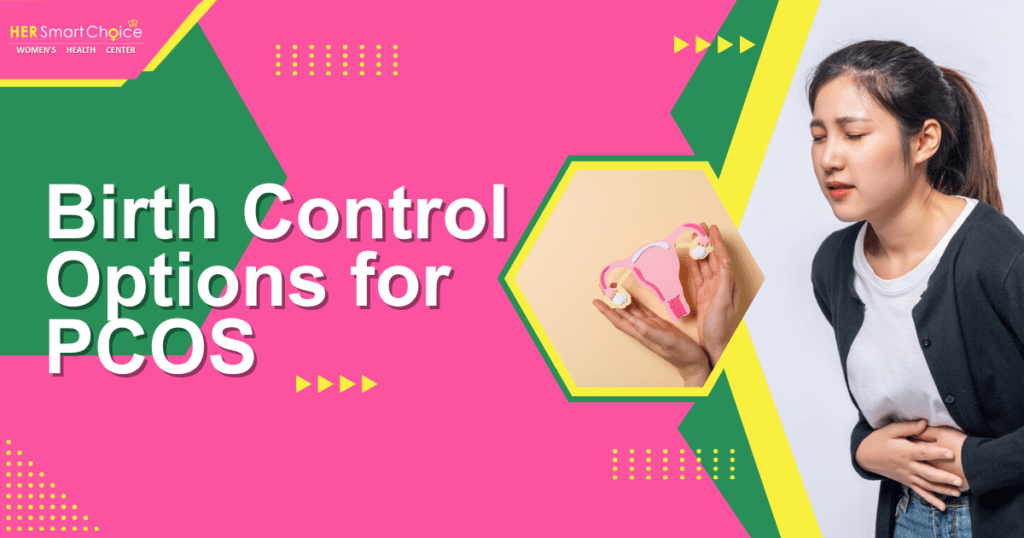Complete List of 8 Abortion Pills: Uses, Effectiveness, and Access Guide
The landscape of medical abortion has evolved in the past two decades, offering women a safe, non-invasive alternative to surgical procedures. Medical abortion uses pharmaceutical agents—commonly referred to as abortion pills, including abortion-pills-considering-abortion and medication abortion options—to terminate early pregnancies. Emphasizing patient autonomy and informed decision-making, this guide offers an in‐depth look at the eight most common abortion pills, covering their composition, dosage, side effects, and access options.
Healthcare providers and patients alike can gain clearer insights into the use of these essential medications to make informed reproductive care decisions. For further clarification, make your appointment with your healthcare provider to discuss mifeprex mifepristone information and mifepristone details.
Follow Us!
What Are the 8 Most Common Abortion Pills?
Medical abortion involves several pharmaceutical agents used in combination to terminate early pregnancies, such as mifeprex mifepristone information. The eight most common abortion pills, representing varied medication abortion options, have been identified through clinical research, regulatory approval, and global use. This section reviews the specific medication composition, including incomplete abortion guidelines and general characteristics, as well as the intended purposes of these pills. Furthermore, effective birth control strategies are essential in preventing unintended pregnancies.
Which Medications Are Included in the List of Abortion Pills?
Typically, the list includes medications such as mifepristone and misoprostol (abortion-pills-considering-abortion), with occasional inclusion of other antiprogestogens or prostaglandin analogues, offering medication abortion options for patients. Mifepristone (mifeprex mifepristone information) blocks progesterone, a hormone necessary for pregnancy continuation, while misoprostol induces uterine contractions to expel the pregnancy tissue. In some protocols, additional medications may be added based on regional regulatory requirements. Each pill plays a distinct role: one prepares the uterus by destabilizing its lining, and the other triggers contractions necessary for expulsion. Together, they form a standardized regimen that maximizes efficacy and safety.
How Do These Abortion Pills Differ in Composition and Purpose?
Abortion pills are designed to address two critical steps of medical abortion: discontinuing the hormone support required for pregnancy and inducing uterine contractions to expel pregnancy tissue (incomplete abortion guidelines may be consulted if complications arise). mifeprex mifepristone information indicates that mifepristone primarily functions as an antiprogestogen, eliminating the hormonal support, while misoprostol acts as a uterotonic to prompt contractions. Some newer formulations use enhanced prostaglandin derivatives to better meet patient needs or regulatory standards. Variations in dosages and routes of administration (oral, sublingual, vaginal, or buccal) allow healthcare providers to tailor treatment protocols based on factors such as gestational age, patient tolerance, medical history, and birth control options.
How Do Abortion Pills Work for Medical Abortion?

The process of medical abortion (abortion-pills-considering-abortion) combines hormonal inhibition with the physical expulsion of pregnancy tissue. Refined over years of clinical trials, the method consistently yields high success rates with low complication frequencies; for more details, refer to mifeprex mifepristone information and incomplete abortion guidelines. This section outlines the process from the first administration to the end of the abortion, supported by clinical study evidence.
What Is the Medical Process Behind Abortion Pills?
Abortion pills work in two stages (abortion-pills-considering-abortion). First, mifepristone is administered (mifeprex mifepristone information); it competes with progesterone at its uterine receptor sites, causing the endometrial lining to break down. This loss of support destabilizes the pregnancy. Subsequently, misoprostol is given to induce uterine contractions (medication abortion options) that expel the pregnancy tissue. The process, which can span several days, requires careful monitoring for pain management and potential side effects (incomplete abortion guidelines). Medical supervision ensures safe progression and confirms complete abortion through follow-up care (make your appointment).
How Effective Are Abortion Pills in Terminating Pregnancy?
The combination of mifepristone and misoprostol is highly effective, with clinical studies showing success rates often exceeding 95% when used within the approved gestational limits. For additional context, see mifeprex mifepristone information regarding the medication specifics. This effectiveness is primarily due to the synergistic action of the two medications, which many consider among the top medication abortion options. Factors such as the gestational age at treatment (abortion pill age), strict adherence to dosages, and appropriate timing between doses are critical in achieving a successful outcome. Although there is a very low incidence of incomplete abortions, surgical intervention may be required in rare cases; in such situations, referring to incomplete abortion guidelines can be valuable.
What Are the Typical Dosages and Administration Methods?
Standard treatment protocols usually involve a single dose of mifepristone (for mifeprex mifepristone information) followed by one or more doses of misoprostol (considering medication abortion options) administered 24 to 48 hours later. Commonly, guidelines suggest mifepristone dosages between 200–600 mg, followed by 800 mcg of misoprostol. Administration methods vary—oral, sublingual, buccal, or vaginal routes may be chosen based on clinical setting and patient factors. For example, vaginal administration can enhance uterine uptake, while sublingual administration offers a rapid onset of action. These options help ensure that treatment is adapted to the patient’s specific requirements, and patients are encouraged to make your appointment for further discussion on birth control.
What Are the Common Side Effects and Risks of Abortion Pills?
Abortion pills, while non-invasive and often discussed under the context of abortion-pills-considering-abortion, can cause a range of side effects and carry inherent risks. In some situations, healthcare providers might refer to incomplete abortion guidelines and review Mifeprex mifepristone information as part of the discussion on medication abortion options. Understanding these effects is important for both patients and providers to manage expectations and to intervene early if complications arise; therefore, it is advisable to make your appointment if any concerns occur.
Which Side Effects Should Users Expect?
Common side effects include cramping, heavy vaginal bleeding, nausea, vomiting, diarrhea, and fatigue. Many patients may also experience a mild fever or chills as part of the body’s natural response. For further clarification on the medication used in this process, please review the Mifeprex mifepristone information to understand what to expect. These reactions are typically temporary, often lasting only a few hours to a couple of days after the medication is taken. Patients are advised to make your appointment with their healthcare provider if symptoms worsen or persist, so that incomplete abortion guidelines can be followed appropriately. Such side effects are inherent to the process that enables the uterus to shed its lining and expel the pregnancy tissue. Patients should carefully monitor their symptoms and follow the aftercare instructions provided by their healthcare provider.
When Should Medical Help Be Sought After Taking Abortion Pills?
It is essential to seek medical attention if severe complications arise. If you are exploring medication abortion options, it is important to make your appointment with a healthcare provider promptly. Warning signs include very heavy bleeding (e.g., soaking through two or more pads per hour for several hours), severe abdominal pain that is not relieved by over-the-counter medications, signs of infection (such as high fever or foul-smelling discharge), or persistent dizziness and rapid heartbeat suggesting internal bleeding. In cases where you may have used abortion-pills-considering-abortion, reviewing mifeprex mifepristone information can be a helpful step in understanding your situation. Prompt contact with a healthcare provider is critical to determine whether additional treatment or surgical intervention is needed. Early detection and management can prevent more severe health issues.
How Do Side Effects Vary Between Different Abortion Pills?
Side effects can vary depending on the specific formulation and dosage used. For instance, higher doses of mifepristone (mifeprex mifepristone information) might lead to more intense cramping and abdominal discomfort. The route chosen for misoprostol administration (oral versus sublingual or vaginal, abortion-pills-considering-abortion) can influence the severity and onset of gastrointestinal side effects, such as nausea or headache. Additionally, individual factors like pre-existing gastrointestinal conditions or differing thresholds for pain may affect the side effect profile. Healthcare providers strive to adjust protocols and discuss medication abortion options to minimize discomfort and optimize the overall treatment experience.
Where and How Can You Access the 8 Abortion Pills Safely?

Obtaining abortion pills safely relies on understanding the legal and medical frameworks governing their access, including key aspects like abortion-pills-considering-abortion and incomplete abortion guidelines. This section discusses the prerequisites—such as mifeprex mifepristone information—and methods for finding reputable clinics and providers. It also advises you to make your appointment and consider resources like hersmartchoice when evaluating medication abortion options and reviewing anchor text: abortion pill age details from online sources.
What Are the Legal Considerations for Obtaining Abortion Pills?
Abortion pills are regulated by state and national laws that require dispensing under appropriate medical supervision. In many areas, a prescription from a certified healthcare provider is necessary, and clinics are required to adhere to strict regulatory standards. Informed consent, which involves detailed counseling about risks, benefits, and alternative options, is typically mandated. Some regions may require waiting periods or verification of gestational age before the medication is issued. Providers must maintain accurate records and use only approved formulations to minimize misuse and ensure patient safety.
How Can Patients Find Clinics or Providers Offering Abortion Pills?
Patients can locate abortion pills through accredited family planning clinics or hospitals that specialize in reproductive health services. Organizations such as Planned Parenthood in the United States, along with similar entities internationally, often provide reliable information and access. In addition, approved healthcare directories, online review platforms, and local community health centers can help patients identify reputable providers. Many clinics also provide multilingual websites and hotline services to offer up-to-date information on appointment scheduling, service availability, and insurance coverage. Verifying provider credentials and ensuring that clinics follow current medical guidelines is essential.
Are Abortion Pills Available Online and What Precautions Apply?
While abortion pills are sometimes available through online platforms, obtaining them via telemedicine carries important risks if precautions are not taken. Only reputable telemedicine services that comply with national regulations should be used. These platforms require thorough medical evaluations and identity verification before dispensing medication. Clear instructions for dosing, aftercare, and follow-up consultations must be provided to ensure safe use. Caution is advised to avoid unregulated websites that may sell counterfeit or subpar medications. Confirming the legitimacy of online services through recognized health authorities is key to safeguarding patient safety.
How to Choose the Right Abortion Pill for Your Situation?
Selecting the appropriate abortion pill involves evaluating individual health conditions, the stage of pregnancy, and personal circumstances. This section explains the factors that influence the choice of abortion pills and discusses alternative methods for those unsuitable for medication-based abortion.
What Factors Influence the Choice of Abortion Pill?
Decisions regarding abortion pills depend on several factors, including the gestational age at administration, the patient’s overall medical history, and any pre-existing conditions (such as gastrointestinal disorders or allergies). The formulation and dosage requirements, detailed in guidelines from regulatory bodies (e.g., the FDA), play a crucial role. Additionally, ease of administration, the anticipated side effects, and the patient’s route preference (oral versus vaginal) are significant. Insurance coverage, cost considerations, and the availability of counseling and aftercare services also affect the decision-making process.
How Do Medical Professionals Recommend Abortion Pills?
Healthcare providers base their recommendations on current clinical guidelines and evidence from controlled trials. They follow protocols specifying precise dosing sequences and routes of administration to maximize treatment effectiveness while reducing side effects. During consultations, providers consider the patient’s reproductive history, identify potential contraindications, and discuss the expected timeline for treatment completion. Providers also inform patients of alternative options, such as surgical abortion, should complications arise. The emphasis is on patient education and ensuring that the patient is fully prepared for both the physical and emotional aspects of the treatment.
What Alternatives Exist if Abortion Pills Are Not Suitable?
If abortion pills are contraindicated due to medical conditions or patient preference, surgical abortion remains a viable option. Procedures such as vacuum aspiration or dilation and evacuation are available, with the choice depending on the gestational age and individual clinical circumstances. Some patients may also consider counseling and support services to help with the decision-making process. In select cases where direct intervention is not ideal, expectant management may be considered under close medical supervision. It is essential that any alternative method be thoroughly discussed with a qualified healthcare provider to ensure it aligns with the patient’s health needs and preferences.
What Are the Latest Updates on Abortion Pills and Medical Research?

Research on abortion pills continues to refine treatment protocols and enhance safety profiles. Innovations in drug delivery, updated clinical guidelines, and evolving legal frameworks are contributing to improved standards of care. This section highlights recent research trends and regulatory changes that may influence future practices.
What Recent Studies Impact Abortion Pill Usage and Safety?
Recent clinical trials consistently demonstrate that the combined regimen of mifepristone and misoprostol is highly effective, with success rates above 95% for early medical abortions. Peer-reviewed meta-analyses have confirmed that severe complications remain rare when protocols are precisely followed. Ongoing research is further refining dosing schedules and pain management techniques by incorporating patient-reported outcomes. These improvements have led to updated recommendations from major health authorities like the World Health Organization, ensuring that both clinicians and patients benefit from the latest evidence-based practices.
How Have Legal Changes Affected Abortion Pill Availability?
Legal frameworks significantly influence access to abortion pills. In several regions, recent legal reforms have eased restrictions, allowing broader access through clinics and telemedicine services. Conversely, other areas have introduced stricter controls that require additional documentation or supervised administration. Changes in policies have also affected insurance coverage and funding for reproductive health services. Updates to laws such as aspects of the Affordable Care Act have, in some states, improved coverage for reproductive services, thereby increasing access to abortion pills at a reduced cost.
What Innovations Are Emerging in Medical Abortion Treatments?
Advancements in drug formulations and delivery methods continue to evolve in the field of medical abortion. Researchers are investigating alternative dosing regimens and administration routes that may reduce variability in patient responses. Newer formulations aim for more consistent absorption and improved predictability of the treatment process. Additionally, digital health technologies, including remote monitoring and telemedicine-based follow-up consultations, are being integrated into abortion care protocols. Such innovations have the potential to further streamline the process while increasing patient comfort and the overall safety of the procedure.
What Support Resources Are Available for Users of Abortion Pills?
Reliable support resources are critical for patients recovering from medical abortion, both physically and emotionally. This section outlines where patients can find reputable, evidence-based information and connect with the necessary support services.
Where Can Users Find Unbiased, Evidence-Based Information?
Reputable sources such as the Centers for Disease Control and Prevention (CDC) and the World Health Organization (WHO) provide comprehensive guidelines and safety information on abortion pills. Peer-reviewed journals and publications from national research institutes also offer valuable data regarding treatment outcomes, efficacy, and side effect profiles. In addition, many non-profit organizations and reproductive health advocacy groups maintain websites and hotlines, offering up-to-date, unbiased information to assist in informed decision-making.
What Multilingual and Accessible Resources Exist for Diverse Audiences?
To ensure that all women have access to vital information, many healthcare providers and national health services offer resources in multiple languages. These resources include audio-visual materials, downloadable brochures, and interactive decision-making aids adapted to various cultural contexts. Community outreach programs and local reproductive health centers also offer counseling services that are linguistically and culturally tailored, ensuring that diverse populations can access the support they need during the medical abortion process.
How Can Users Connect With Counseling and Medical Support Services?
Connecting with qualified counseling and medical support is an essential part of post-abortion care. Many family planning clinics provide integrated services that include both medical follow-up and mental health counseling. Telemedicine services have expanded to offer virtual consultations and real-time support from certified healthcare providers. Patients can access these services via dedicated hotlines or online appointment systems available through reputable reproductive health organizations. These support networks aim to ensure a comprehensive recovery process by addressing both physical and emotional needs.
Table Comparison: Key Attributes of Abortion Pills
Before proceeding, the following table compares key attributes such as mechanism, dosage, common side effects, and effectiveness rates for the abortion medications discussed:
| Medication | Mechanism | Recommended Dosage | Common Side Effects | Effectiveness Rate |
|---|---|---|---|---|
| Mifepristone | Blocks progesterone receptors | 200 mg orally | Nausea, headache, mild bleeding | 95-98% (in combo) |
| Misoprostol | Induces uterine contractions | 800 mcg buccally/vaginally | Cramping, heavy bleeding, diarrhea | 80-85% (alone) |
| Generic Formulation 1 | Similar to mifepristone | Varies | Similar to mifepristone effects | Comparable |
| Generic Formulation 2 | Similar to misoprostol action | Varies | Similar to misoprostol effects | Comparable |
| Combination Kit A | Sequential anti-progesterone and uterotonic | Fixed package dosing | Combined profile of both medicines | Up to 98% |
| Combination Kit B | Similar dual approach | Fixed package dosing | Managed side effects with enhanced support | Up to 98% |
| Proprietary Kit C | Innovative formulation with added supplements | Varies | Reduced gastrointestinal discomfort | High |
| Proprietary Kit D | Optimized for rapid absorption | Varies | Mild side effects with shorter duration | High |
After reviewing the table, it is clear that while standard regimens provide strong effectiveness, newer formulations may reduce side effects and improve overall comfort.
Final Thoughts
In summary, the eight common abortion pills are a critical component of medical abortion, offering women a safe and effective non-invasive option for terminating early pregnancies. Clinical evidence and evolving legal frameworks underscore their use, while ongoing research and digital health innovations promise further enhancements in safety and accessibility. Women seeking reproductive health care must weigh the benefits and potential side effects when accessing these medications from reputable providers. Ultimately, informed decision-making, supported by extensive evidence and comprehensive care resources, is key to achieving the best outcomes in medical abortion.
Frequently Asked Questions
Abortion pills combine an antiprogestogen with a prostaglandin analogue. Mifepristone disrupts the hormonal support required for pregnancy, while misoprostol induces uterine contractions to expel pregnancy tissue.
The combined regimen has an effectiveness rate of approximately 95% or higher when used in early pregnancy. Clinical studies show that adherence to the dosing schedule and careful monitoring minimize the risk of incomplete abortion.
Patients may experience cramping, heavy bleeding, nausea, vomiting, diarrhea, and fatigue. Mild fever and chills are also common. These side effects are generally short-lived, but severe symptoms like heavy bleeding or signs of infection require prompt medical attention.
Yes, licensed telemedicine platforms and reputable reproductive health clinics provide online consultations and prescriptions. It is essential to use only services that comply with legal and medical standards to ensure patient safety.
Surgical abortion remains a viable alternative if abortion pills are contraindicated or not preferred. Procedures such as vacuum aspiration or dilation and evacuation are available and should be discussed with a qualified healthcare provider.
Dosages are based on established clinical guidelines that consider gestational age and patient medical history. Typically, a dose of mifepristone is followed by misoprostol 24 to 48 hours later, with dosages adjusted according to individual needs.
Recent studies continue to refine dosing regimens, explore alternative administration routes, and integrate digital monitoring for follow-up care. Legal changes and real-world outcomes also help shape future guidelines, ensuring that these medications remain safe, effective, and accessible.
Follow Us!

































